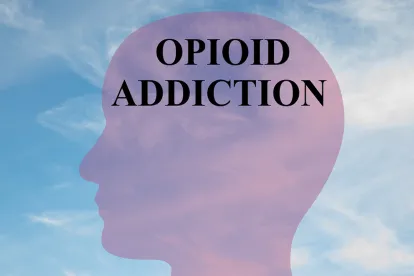Starting January 1, 2023, Medicare will cover telehealth-based treatment services delivered by federally-accredited opioid treatment programs (OTPs), commonly referred to as “methadone clinics.” This new reimbursement is intended to further the Centers for Medicare and Medicaid Services’ (CMS) objectives in its 2022 Behavioral Health Strategy, with a particular focus on improving access to substance use disorder (SUD) prevention, treatment, and recovery services. To this end, CMS added several expansion opportunities for OTPs, including telehealth coverage. However, these flexibilities do not extend to SUD treatment provided outside an OTP, such as office-based opioid treatment (OBOT) services.
Details of the new coverage rules are contained in the 2023 Physician Fee Schedule (PFS) Final Rule (Final Rule), and summarized below.
Background and History of Medicare Telehealth Coverage of SUD Treatment
Prior to the federal COVID-19 Public Health Emergency (PHE), to initiate treatment with buprenorphine at an OTP, a practitioner needed to perform a complete in-person physical evaluation. The Drug Enforcement Administration (DEA) and the Substance Abuse and Mental Health Services Administrating (SAMHSA) waived this requirement for the duration of the PHE, allowing medication-assisted treatment (MAT) practitioners to initiate treatment with buprenorphine via audio-video telehealth and/or audio-only telephone communications without an initial in-person evaluation (subject to state law restrictions). This temporary exemption only applies to OTP patients treated with buprenorphine; it does not apply to new patients treated with methadone.
CMS also extended coverage for SUD treatment services provided via telehealth. While Medicare telehealth services fall under Section 1834(m) of the Social Security Act, which generally limits payment for telehealth services to patients located in specific types of medical settings (originating sites) in mostly rural areas, the SUPPORT Act amended Section 1834(m), by removing the originating site and geographic limitation for telehealth services provided to individuals with a diagnosed or co-occurring mental health disorder (including a SUD) delivered on or after July 1, 2019.
In 2020, CMS established a new Part B benefit category for opioid use disorder (OUD) treatment provided by OTPs. The covered benefit includes MAT for patients with OUD, a leading treatment modality that combines prescribing FDA-approved medication (e.g., methadone and buprenorphine) with counseling and other behavioral therapy, to provide a whole person approach.
Subsequently, the Consolidated Appropriations Act of 2021 (CAA) permanently removed the geographic restrictions and added the patient’s home as a qualifying originating site for telehealth services provided for the diagnosis, evaluation, or treatment of a mental health disorder. Under the CY 2022 PFS final rule, CMS revised the definition of “interactive telecommunication system” to allow the use of audio-only communications technology for telemental health services under certain conditions when the beneficiary is located at their home.
New Changes to Medicare OTP Telehealth Services
Under the Final Rule, CMS made the following changes relating to OTP telehealth services:
-
OTPs can use the OTP intake add-on code to bill for the initiation of buprenorphine treatment through two-way interactive audio-video communication technology, as clinically appropriate, and in compliance with all applicable requirements (provided such flexibilities are authorized by DEA and SAMHSA at the time service is furnished).
-
Audio-only telephone calls can be used to initiate buprenorphine treatment at OTPs when two-way audio-video communications technology is not available to the beneficiary, and all other requirements are met.
-
CMS interprets “not available to the beneficiary” to include “circumstances in which the beneficiary is not capable of or has not consented to the use of devices that permit a two-way, audio/video interaction because in each of these instances audio/video communication technology is not able to be used in furnishing services to the beneficiary.”
-
-
After the initiation of buprenorphine treatment, OTPs can continue to use audio-only telephone calls to perform periodic patient assessments when two-way audio-video is not available (provided such flexibilities are authorized by DEA and SAMHSA at the time service is furnished). This flexibility will be in place until the end of CY 2023.
CMS Recognized Broad Stakeholder Support for Telehealth SUD Treatment
In comments to the new rules, stakeholders lauded the benefits of two-way audio-video communications technology used to initiate treatment with buprenorphine. CMS concurred, noting it is “of critical importance to individuals who have limited ability to attend in-person appointments or who are disincentivized to do so due to perceived stigma and fear.” CMS also acknowledged that audio-only flexibilities “further promote equity for individuals who are economically disadvantaged, live in rural areas, are racial and ethnic minorities, lack access to reliable broadband or internet access, or do not possess devices with video functions.”
CMS declined to address comments relating to issues outside the scope of the final rule, including: 1) comments related to allowing prescribers to initiate buprenorphine treatment for SUDs without an in-person evaluation in other settings (outside of OTPs); 2) coordinating with DEA to create a special registration for telehealth providers under the Ryan Haight Act; and 3) developing an add-on code for Contingency Management.
While the final rule does not extend coverage to OBOT treatment – which has proven a successful treatment option during the COVID-19 PHE – it evidences CMS’s view of technology as a viable way to provide life-saving SUD treatment to vulnerable beneficiaries.





 />i
/>i

